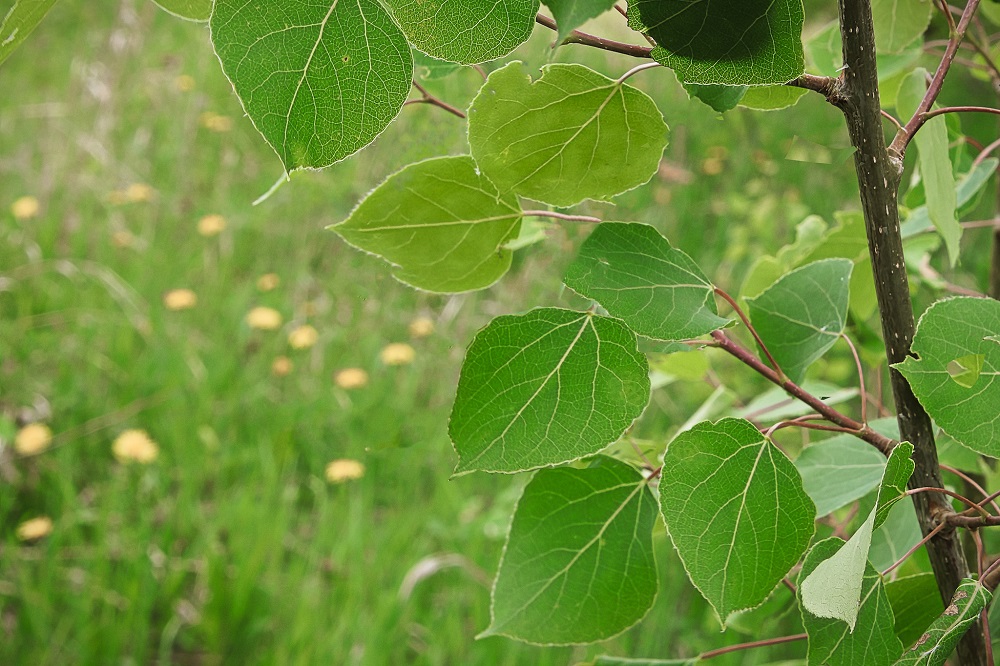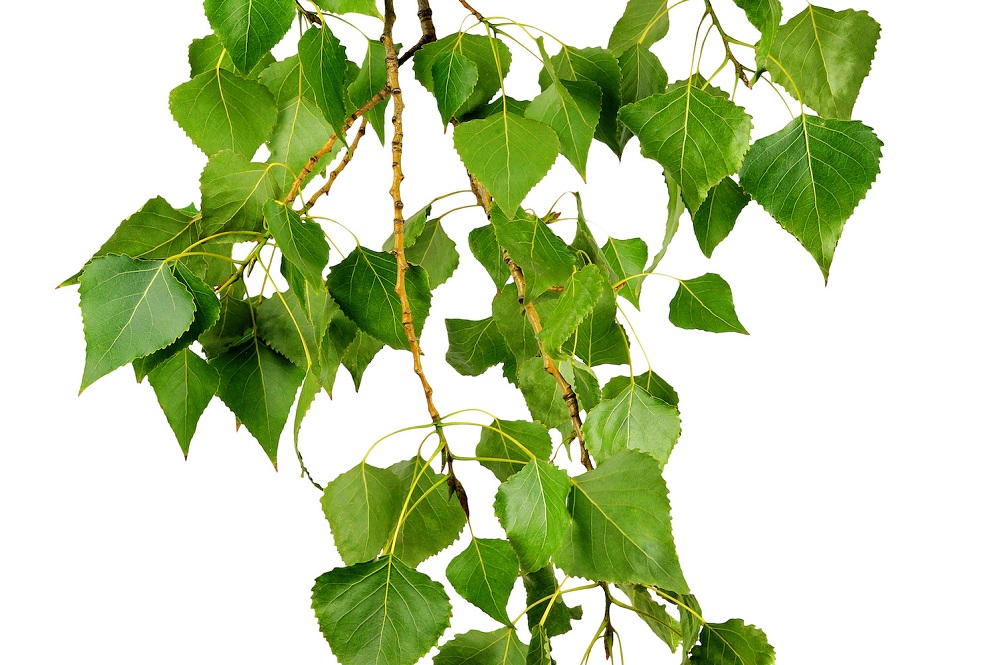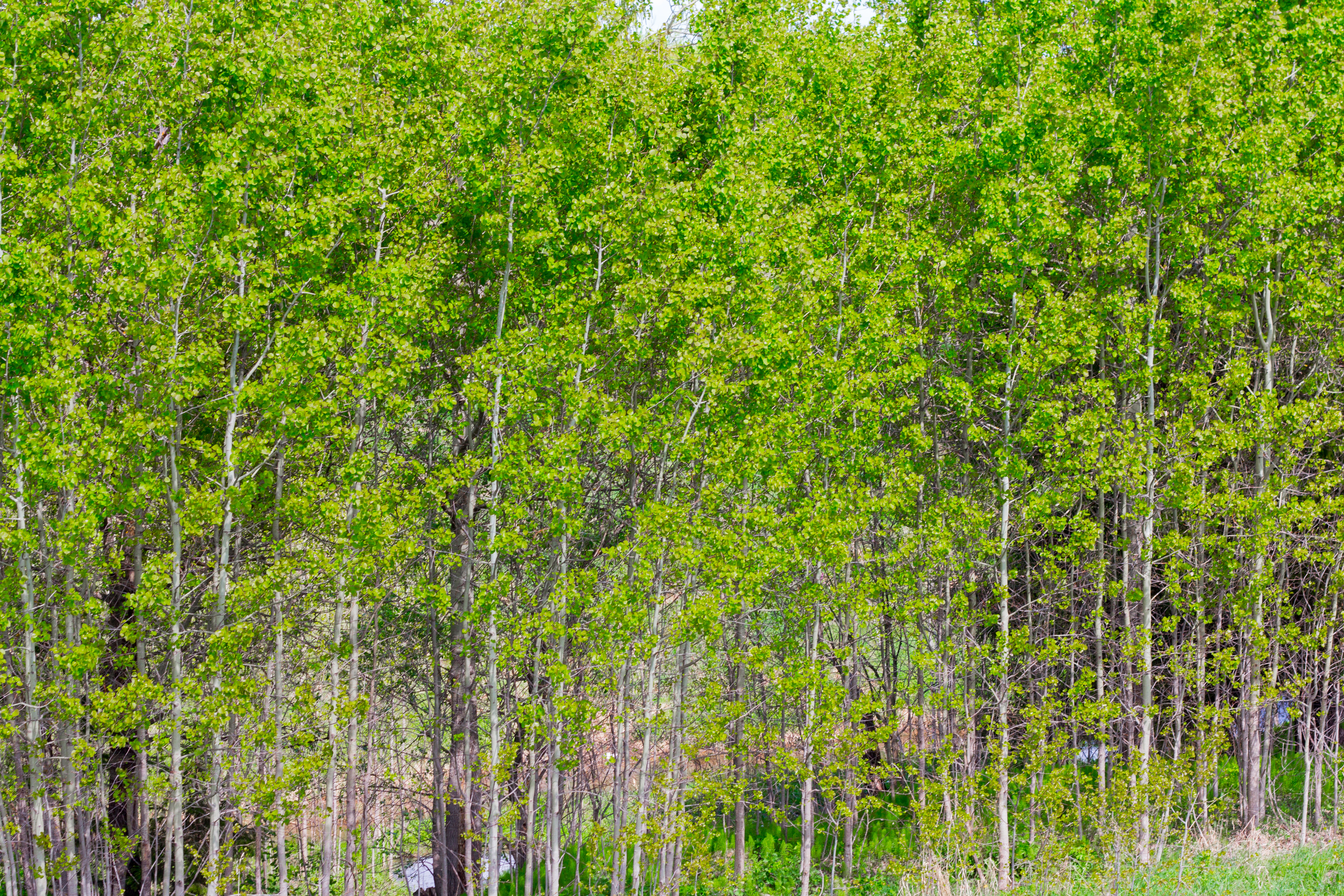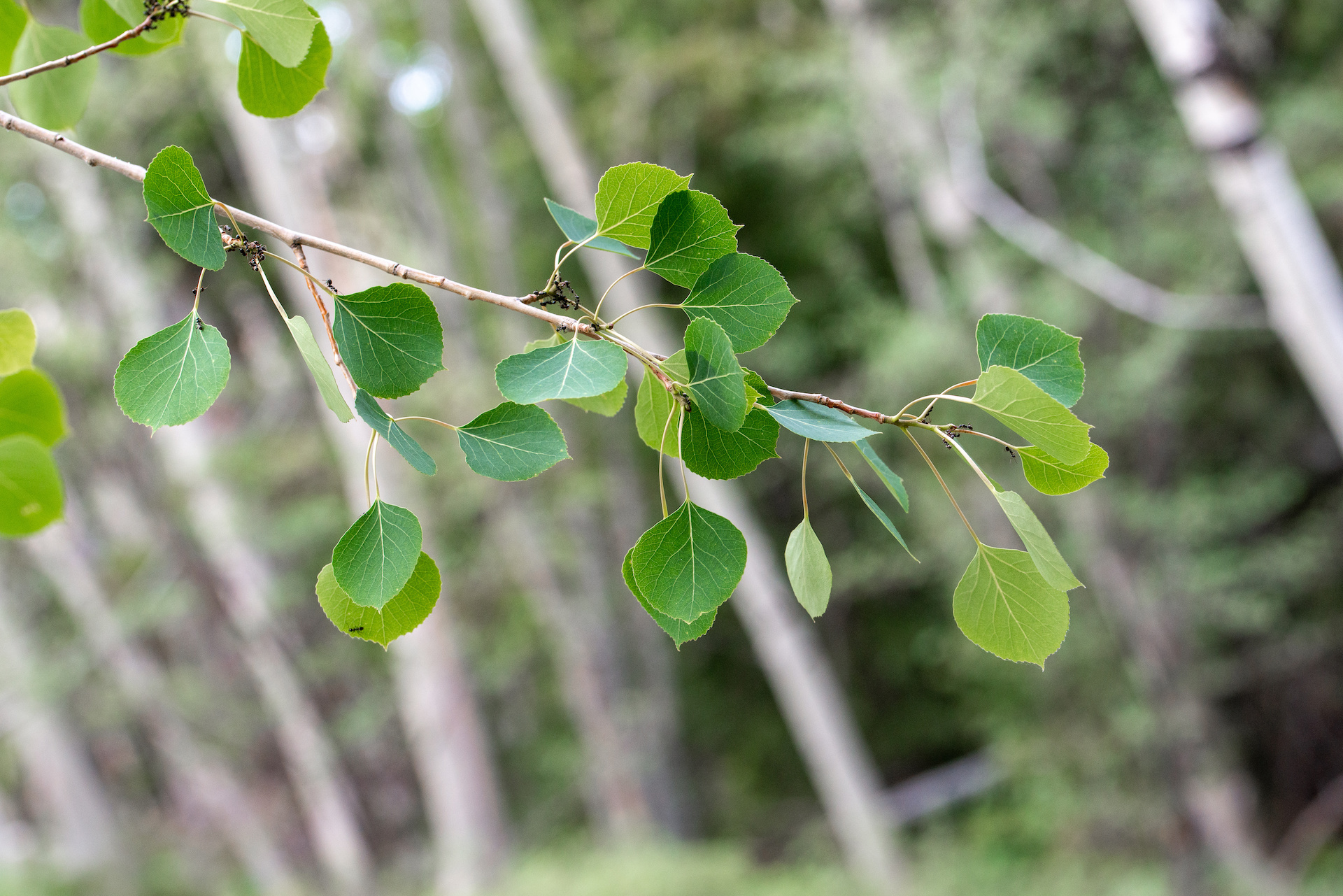Identifying Black Poplar
Black poplar is considered an invasive species outside its native regions of Asia and Europe2 given its long lifespan (up to 300 years), adaptability to different soil types and breeding compatibility with other Populus species.2 They are hosts for a number of insect pests and fungal pathogens, and are fast-growing, reaching heights of up to 100 feet.
Black Poplars have triangular leaves that are between 5-to-8 cm long and up to 8 cm wide. A deciduous tree, the leaves are shiny and green in the summer before turning yellow in the fall. During the growing season, black poplars develop a thick waxy cuticle on the leaves. This cuticle forms to prevent water loss. The bark of young trees is a grey/green colour that turns dark brown/black and rough as the trees grow larger and older. Flowering typically begins in early spring with males producing red drooping flowers (catkins). Female trees will then produce fluffy, cotton-like seeds clusters for wind-dispersal.


Identifying White Poplar
Introduced to North America from Eurasia in the mid-1700s, White Poplar are deciduous trees that aggressively grow in a variety of environments,3 outcompeting other native species in mostly sunny areas, like forest edges and fields.4 At mature height, they can reach up to 70 feet. White Poplar trees grow in dense stands that suppress the growth of other native tree species by producing prolific root sprouts.5 Although seeds are spread by wind, few germinate; reproduction occurs mainly from root suckers which become more abundant as the tree ages.3
In contrast to Black Poplar, White Poplar tree bark is smooth and of a slight green colour that becomes wrinkled and grey to white as the tree matures.5 Measuring 5-to-10 cm long, leaves are lobed, dark green on the top and white underneath with fine hairs coating the silvery underside. Unlike Black Poplar, the White Poplar tree doesn’t have any significant fall colour change.6 Flowers (catkins) are clustered, long and green (female) or reddish green (male). Like the Black Poplar, the females also release fluffy cotton-like seeds that fall and are dispersed by wind.


Controlling Black and White Poplar
Control of Black and White Poplar may require several years of commitment since resprouting of saplings can occur. Removal of as much of the root system as possible is recommended and repeated treatments may be necessary.3 A foliar herbicide application is the most effective method to control seedlings as well as small to medium sized trees. For trees 18 feet and taller, often the most effective control is achieved by mechanically removing the large tree first and then respraying the growth the following year with a herbicide application.
Herbicide Solutions
Our herbicide solutions, Grazon™ XC herbicide plus Gateway™ adjuvant and the tank-mix of Reclaim™ II herbicide plus Grazon XC herbicide plus Gateway adjuvant, can help control both Black and White Poplar. These herbicides translocate from the leaves into the root system of the tree and control not only the main tree but also dormant buds to prevent re-suckering. Due to the complexity of controlling trees – type of tree, height, other species present, timing and environmental factors – please contact your Corteva Agriscience™ Range & Pasture Specialist for specific product and rate recommendations.
Tips For Successfully Controlling Black and White Poplar Trees:
- Ensure there is active plant growth with no insect or disease pressure.
- Avoid application when environmental stresses such as severe drought or extended periods of heat occur as this may decrease herbicide efficacy.
- A non-ionic surfactant such as Gateway™ adjuvant should be added to help achieve optimum herbicide uptake. Gateway should be added at 0.25% v/v for ground applications or 1% v/v for aerial applications. Gateway adjuvant helps to penetrate the waxy cuticle of the leaves and improves plant uptake. If maximum rainfastness is desired, increase the rate of Gateway adjuvant to 0.375% v/v for ground applications.
- For White Poplar control, herbicide applications should occur from June through to August prior to leaf senescence (leaf drop).
- As mentioned earlier, Black poplar trees develop a thick waxy cuticle on their leaves as the season progresses. The development of this waxy cuticle makes it more difficult for herbicide to penetrate the leaves. For best results, Black poplar should be sprayed prior to the end of June; applications made beyond the end of June may be less effective.
By incorporating herbicides into your integrated pasture management plan, you can limit tree encroachment, preserve native grass species, and increase your carrying capacity. Corteva Agriscience has a portfolio of solutions to help improve your pasture health and productivity. To learn more visit RangeAndPasture.corteva.ca or speak to your Corteva Agriscience Range & Pasture Specialist.
1https://www.beefresearch.ca/files/pdf/Guide_to_Brush_Management_Prairies.pdf
2https://www.cabidigitallibrary.org/doi/10.1079/cabicompendium.43535#:~:text=It%20is%20considered%20an%20invasive,on%20natural%20habitats%20and%20biodiversity.
3https://treecanada.ca/resources/tree-killers/white-poplar/
4https://www.invasive.org/alien/fact/poal1.html
5https://invasive-species.extension.org/populus-alba-white-poplar/#:~:text=White%20poplar%20is%20an%20invasive,and%20wrinkled%20as%20trees%20age.
6https://leafyplace.com/poplar-trees/









